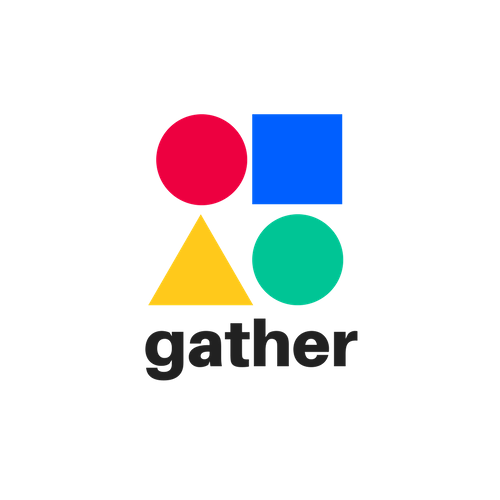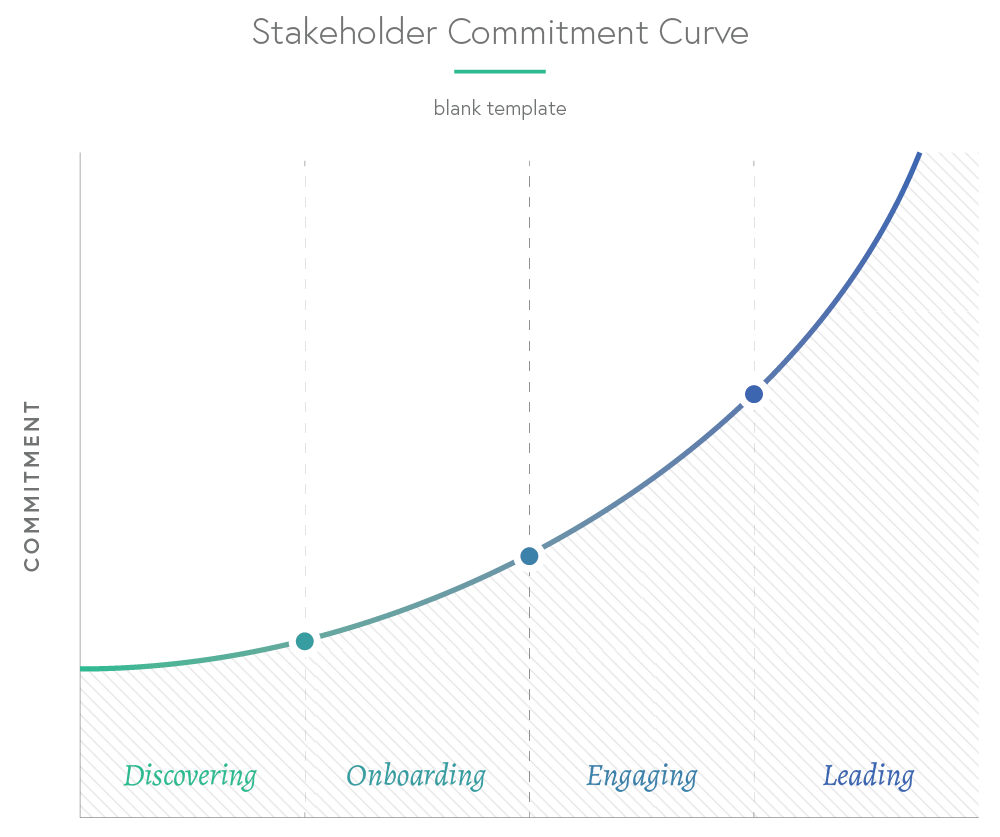The Community Commitment Curve: An Introduction
This is part 1 in a 3-part series. You can read Part 2 and Part 3 here as well.
One of the most common questions that community managers ask is: “How do I engage my community members?” Though this is one of the most common community questions, the truth is that it's usually the wrong question to ask.
That's because there is no single way to engage members. Oftentimes, those asking the question want quick tips and random ideas. But random ideas are just that: random. Your community is not just a random, general place for people to gather. It's a place where people gather to share a common purpose or identity. Therefore, all engagement must serve that common purpose.
As a result, there is no one-size-fits-all approach to engaging communities, but there is a framework to create engagement and leadership for your specific community's purpose.
It’s the Community Commitment Curve.
What is the Community Commitment Curve?
I first heard about the term “Commitment Curve” in Ayelet Baron’s talk at the My Community Manager Unconference in 2013. Baron, the former Chief Strategy Officer for Cisco Canada, mentioned it briefly and spoke about its importance to organizational change.
Then, in November 2014, Douglas Atkin brought up the Commitment Curve at CMX Summit and explained how his team had used it at Airbnb to mobilize thousands to change public policy around home-sharing. I started to dig in deeper and found that it had been used in change management for decades and by organizer Marshall Ganz, and that Atkin had also used the model at Meetup to fuel organizer engagement. I felt I had stumbled onto a community building goldmine.
In the years since then, I’ve used the Commitment Curve dozens of times to help companies visualize and then plan how to engage impactful communities. We also taught it to hundreds of community builders (from companies like ADP, Discovery Channel, Facebook, Salesforce, and more) via CMX's training program.
The Commitment Curve will not only help you organize your ideas, it will also help you scale engagement over time deliberately. This model is useful for UX designers, community builders, product managers, and founders who are concerned with building meaningful communities,and platforms.
Let’s dive into how to use this model in your work.
How the Commitment Curve Works in Community Building
Psychological research shows that the more members invest in their community, the more they feel they belong to it. This idea is vital to crafting engagement but is often overlooked. We often fear to ask for help, assuming that we are inconveniencing people when we do so. In fact, asking for help is the only way to create a true sense of belonging, rather than a one-to-many broadcast.
Asking for help in your community is an act of service. We shouldn’t be shy about asking. Our job is to architect belonging, and the Commitment Curve is our key tool in doing so.
A Real-World Example of How the Commitment Curve Works
Imagine, for a second, that you meet someone at a conference. They tell you their name, and then they ask you to be their best friend. That’s going to sound weird, and you’re probably going to run away as fast as possible.
Yet many communities work like this: you join the community and almost instantly, you are bombarded with ways to interact. Or the opposite happens: you join and no one asks anything of you or acknowledges your presence. You browse a bit and never return.
Imagine, instead, that you’re at a conference, and a new person shakes your hand, asks for your name, asks you about your work and life, shares a bit about their own, and then gets your card.
A day later, they email you and ask if you’d be willing to answer a question.
So you do.
Then they ask you if they can buy you coffee and get to know you better.
You do.
Then, at coffee, you both realize you have a passion for Magic: The Gathering. Immediately, they invite you to a Magic: The Gathering meetup.
You go.
After three months of Magic: The Gathering meetups and sharing personal stories, you start to consider this person one of your closest friends.
That is how you carefully build trust and engagement in an individual relationship. It is also how you build engagement at scale.
You can’t move engagement too fast. What ignites quickly burns out just as fast.
The Community Commitment Curve Structure
In our work as community builders, our job is to drive members from discovering our communities (accomplished via marketing), to joining, to engaging, and ultimately to leading the community so it can outlast any one individual leader. That is, in short, how we create scalable communities.
The Community Commitment Curve allows us to place all the asks that we make to engage our members along a linear member journey, like so:
The Community Commitment Curve thus creates a visual demonstration of all the asks you can make that will drive members from that discovering phase to leading.
Creating Your Community Commitment Curve
Now that you understand what a Community Commitment is and what it looks like, you can create your own community commitment curve. I have a step-by-step guide to doing this available on Gather Community Consulting, but let's look at the high-level view of how this is done.
First, you map out all the asks you are currently making or want to make of your members. These don't have to be in any order to begin with. You can add things like:
Fill out profile
RSVP to an event
Reply to a thread
Respond to a direct message
Read the community digest
Oftentimes, it is beneficial to make the list of asks on a piece of paper or in a spreadsheet and then rank them on a scale of 1-10 in terms of difficulty for members to take. For example, asking someone to “follow us on social” is a 1, “fill out your profile” is a 2, “reply to a DM” might be a 6, and “lead a subgroup” would be a 10.
The numbers are subjective and debatable, but what is important is mapping them as closely as you can to the effort required and trust needed to say “yes” to those asks and follow through with them.
From there, you can rearrange all these asks by difficulty and stage in the member journey and then write them on the curve to map them out visually.
If you already have a community and you begin to map out all the asks you are currently making of members, you will often find that you’ve been asking for engagement out of order, such as inviting members to lead a subgroup before they have engaged in less-effort asks. You may also find that you need to add in more asks along the curve in order to fill in gaps in engagement.
Let’s look at an example Community Commitment Curve in action. In a community where your goal is to get people to attend a rally on your organization’s behalf, your organizer’s Commitment Curve may look like this (and would be even far more detailed than this simplified version):
The Two Community Commitment Curves
Most community builders actually benefit from two Community Commitment Curves: one for the organizer(s) and one for everyone else in the organization.
The detailed Commitment Curve, like the example above, is great for you: it gives you all the asks you can make tactically. The asks are in order from smallest to largest, and they lead you to an end goal.
But only those directly involved in the community in your organization will care about this level of detail. That’s where the second Community Commitment Curve comes in.
For the second Curve, we boil the final asks down to just three of the most relevant for showing the engagement of your community. In a Commitment Curve where the goal is to get people to lead their own subgroup, this could become our most basic Stakeholder Commitment Curve:
Thus, one Commitment Curve is for mapping engagement over time and ensuring your members have multiple entry points for engagement. We use this curve to align content and programming strategically, or for helping design engaging community products.
The other Commitment Curve is for measuring your organizational impact. We use this curve to provide data that those outside your team will care about. Of course, the points on this curve are not the only things you should be measuring about your community (in 2017, we at CMX created a report about that), but these measurement points do give you a way to show your team how successful you are at accomplishing intermediate, meaningful leadership goals.
It’s important to have both curves: One will anchor your day-to-day work and programs. The other will offer the data needed to determine if you’re getting people to take impactful actions over time.
What’s Next?
What do you do with the Community Commitment Curve when it’s done? You can create content and programming that maps back to these asks, such as:
In-app notifications
Emails
Meetup events
Subgroups
Weekly threads
Direct messages
This is, in essence, how we build thoughtful content for communities and design thoughtful experiences for members inside of communities.
A Community Commitment Curve is not a magic bullet. You don’t create it once and then members magically become more involved. It doesn't get people to "post more" overnight. Instead, it helps us visualize our work, design better communities, tweak our content and programming to map back to our community's purpose.
Conclusion
The Community Commitment Curve is a framework every single community builder can use in their work. It's one of those concepts that transcends industry, and there are very few concepts like this in community.
If you want to get started, I've created an open version of the most basic Community Commitment Curve brainstorming sheet I use as well as a free worksheet. Feel free to contact me or leave a comment if you'd like to help build out that brainstorming sheet further.
Basic Community Commitment Curve Brainstorming Sheet
Community Commitment Curve Worksheet Download:
An adapted version of this post appears on the blog for Vanilla Forums, where I hosted a webinar on Community Commitment Curves in August 2018. The original article where this piece can be found is located at carriemelissajones.com.
Interested in creating your own commitment curve? Jump to part 2.
Editor's Note: This article originally appeared on carriemelissajones.com in 2014, and this has since been updated to reflect its usage in 2020. You can find the original blog post here.
Major thank you to Evan Hamilton, Sarah Judd Welch, and Shannon Byrne for giving expert feedback in the revision of this resource!






